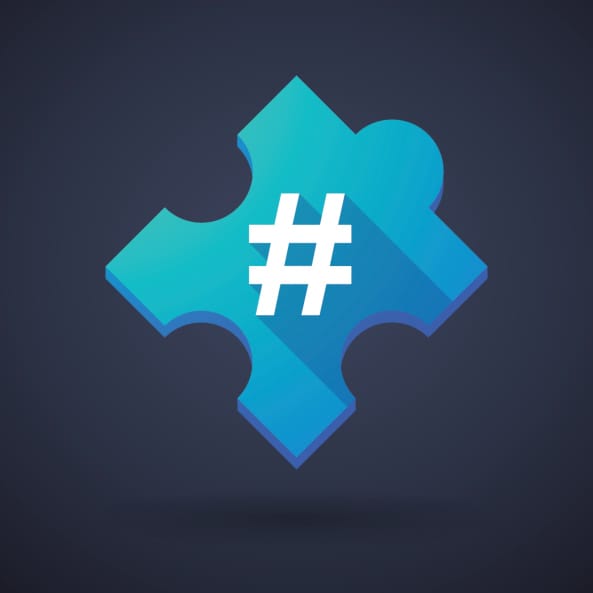Hashtags offer a hand to people with chronic Illness
For people with chronic illnesses, social media is a highly effective way of finding others in a similar situation – a way to connect, share experience and support one another.


By MARC SUDHOLZ
The web of social media has been expanding for a long while now, to help people connect, express their views, and support one another.
For people with chronic illnesses, finding people who they can relate to, and share experiences with, can be very difficult.
However, the emergence of social media, blogging and associated “hashtags” – links that can be used to search for a specific topic on social media – a whole new world of opportunity has emerged, allowing people to find each other and feel safe.
Disease-specific hashtags are used on platforms such as Twitter, Instagram and Tumblr to link up networks of people searching for similar conditions, symptoms or medications.
Carly Findlay is a blogger from Melbourne. She has ichthyosis, a skin condition that in its most serious form can be deadly. Carly began blogging in 2009.
“I started a blog in 2009, to develop a portfolio, work at my writing and feel a part of the blogging community,” she said.
When social media became popular, she began to use hashtags, which allowed her to (virtually) meet other people with ichthyosis.
“I could be connected to a number of like-minded people, discussing or interested in a particular issue or topic,” she said.
“I’ve met so many people who have my condition, [and have] been able to impart advice to parents and people with the condition, and have come to know myself through writing.”
She said that the use of hashtags had allowed her to connect with people, especially those who were older with ichthyosis.

“I have had new parents contact me, worried about their babies and for the future, and I have provided them with advice,” Ms Findlay said.
“I’ve also had people in their 50s and 60s say that until they found my blog, they thought they were alone,” she said.
Ms Findlay said that social media can actually be more useful than face-to face meetings, as it allows people from all over the world to connect: “So many friendships are built,” she said.
One of the people Ms Findlay has connected with is Audrey Ong, a fashion blogger from New York who experiences a mild form of ichthyosis. Mrs Ong began to use social media in sixth grade to connect with others.
“Finding others that do have [ichthyosis] makes me feel as though I am not alone in this, and that I am not the only one going through some of the daily struggles,” she said.
Mrs Ong said social media and the use of hashtags could provide comfort for people in similar situations.
“It can certainly work as a support platform, where we can seek advice and just chat or vent or laugh about things that only us may experience,” she said.
“It’s also a great tool for more awareness.”
Mrs Ong said she was open to be contacted by anyone with ichthyosis.
“I would love to talk to anyone else with ichthyosis, or if anyone has other questions about it.” She can be found across social media @audreyallure.
Social media and disease hashtags can also be a support for people facing a new diagnosis.
Kelly McCabe was diagnosed with multiple sclerosis in 2010, and said there were several issues facing her at the time.
“I was newly queer with feminist ideals, and newly couldn’t feel my legs properly … the people around me cared but couldn’t properly understand,” she recalled.
Ms McCabe said social media helped her find like-minded people.
“It’s certainly helped me find people who ‘got’ what I was talking or whingeing about,” she said.
She says that she has found more people searching for symptoms rather than the hashtag #MS itself.
“I’ve found more support and understanding and friends using hashtags like #brainfog or #invisibleillness than #multiplesclerosis,” she said.
Like Ms Findlay and Mrs Ong, Ms McCabe said social media could help bring people with illnesses together.
“Being sick can be really isolating. I’ve made friends who I now see in real life via Tumblr, usually, who are chronically ill; or I’ve made friends and then found out they also have invisible illnesses,” she said.
“Sometimes seeing a hashtag of #brainfog or whatever on a post can make you feel less alone, or let you know a friend is having a rough time, and that can connect you."
With social media constantly growing, it is encouraging to see that it is not all about selfies and cat videos; it can help to improve lives and create opportunities.
Aside from connecting with similar people, Ms Findlay said she had the chance to develop ideas such as the first Australian Ichthyosis Awareness meet earlier this year, and also speaking at the Centre for Appearance Research at the University of the West of England in Bristol in 2012.
You can connect with Carly on Twitter or Instagram @CarlyFindlay.





